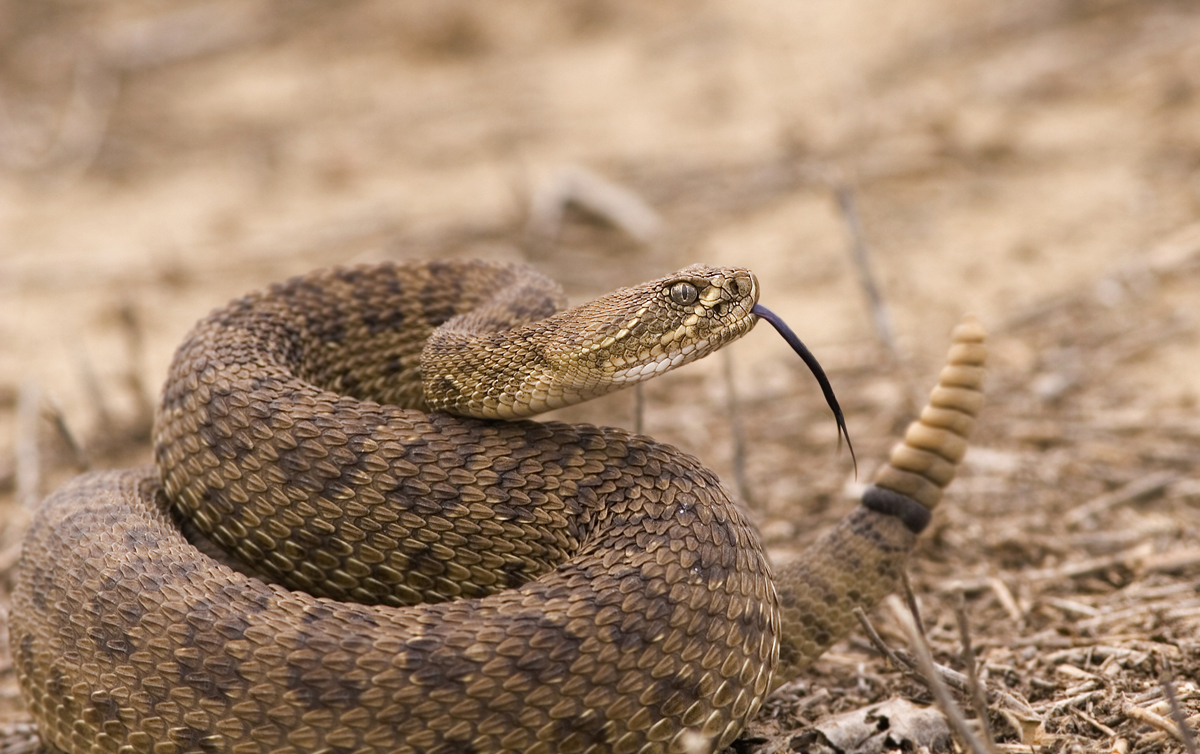
Living in snake country: Six things to consider
By Terry Messmer
For many, the sight of a snake is what nightmares are made of. Unfortunately, all too often Hollywood and has taken advantage of people’s fear of snakes for profit. Some companies may also market products or services that are ineffective at repelling snakes, and in some cases, these products may actually increase the risk to people and pets.
The U.S. Centers for Disease Control estimates that 6,000 to 8,000 people are bitten by venomous snake annually and that up to six snake bite victims may die. Annually, an estimated 90 human deaths occur from various venomous animal encounters. The stings and subsequent anaphylaxis from bees, wasps and hornets are responsible for over 90% of the reported human deaths.
Of the 31 species of snakes found in Utah, seven are venomous. These are commonly called pit vipers because of the pit located between their nostrils and eyes. Most pit vipers found in Utah also have tails with a series of rattles, hence the name rattlesnake.
All snakes are classified as non-game animals and are protected by Utah state law. A person cannot lawfully collect or possess a live wild snake without receiving a Certificate of Registration from the Utah Division of Wildlife Resources. When there are human, domestic pet and livestock safety concerns, a venomous snake may be killed without a certificate.
Because most snakes in Utah are non-venomous, most human-snake encounters are generally not dangerous. However, if you encounter a venomous snake and are bitten, the consequences could be serious. Consider these tips.
If you encounter a snake, your best strategy is to leave it alone. Every year, hundreds of want-to-be herpetologists and snake charmers are bitten when they try to capture or kill a snake. Even dead snakes have been known to bite by reflex action. More than half of the reported snake bites were a result of someone trying to handle or kill the snake. It is always best to leave the area if you encounter one.
When rattlesnakes are encountered or disturbed, the rapid vibration of their tails will make a characteristic rattling sound to warn the intruder of their presence. However, not all rattlesnakes will “rattle” when disturbed. For this reason, when you are in rattlesnake country, you must pay close attention to where you walk, sit and place your hands. Rattlesnakes can be found throughout Utah in sagebrush, pinon-juniper woodlands, sand dunes, rocky hillsides, grasslands and mountain forests.
If you hear a rattlesnake “rattle,” stand still until you can locate where the sound is coming from. Do not try to jump or run. If you do, you may end up within the snake’s striking range.
If bitten by a venomous snake, do not engage in physical activity such as walking or running. Do not apply a tourniquet to the area above the wound and do not apply a cold compress to the bite area. Do not cut into the bite. Do not take anything by mouth, including stimulants or pain medications, unless instructed by a physician. Do not raise the bite area above the level of the heart, and do not try to suction the venom, as doing so may cause more harm than good.
All venomous snakebites should be considered life threatening. When someone has been bitten by a venomous snake, time is of the essence. If possible, call ahead to the emergency room so anti-venom can be ready when the victim arrives. Until then, keep the victim calm, restrict movement and keep the affected area below heart level to reduce the flow of venom. Wash the bite area with soap and water. Remove any rings or constricting items, as the affected area will swell. Cover the bite with clean, moist dressing to reduce swelling and discomfort. Monitor the victim’s vital signs (pulse, temperature, breathing, blood pressure). If there are signs of shock, lay the victim flat and cover with a warm blanket. Get medical help immediately. If possible, bring in the dead snake for identification if this can be done without risk of injury.
Bites from venomous snakes will almost instantly show signs of swelling and discoloration of the surrounding tissue. Other symptoms include a tingling sensation, nausea, rapid pulse, loss of muscle coordination and weakness. Also, bites from rattlesnakes will show two characteristic fang marks (punctures) as well as other teeth marks. Non-venomous snakebites are harmless, but there is still a risk of infection. If bitten, clean and sterilize the wound much like you would a cut or abrasion.
More information about snakes is available at wildawareutah.org.
Terry Messmer is a Utah State University Extension wildlife specialist.



